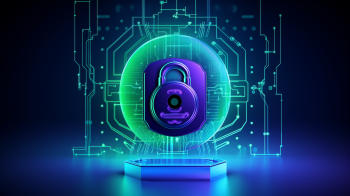One of the biggest threats to modern businesses is cybercrime. With every possible business transaction going online, cyber criminals are becoming more advanced each day and are constantly finding new ways to exploit any weaknesses in software security. But how can you protect your business against cybercrime?
In this blog, we share some very simple tips and basic steps that you can take to keep your business protected. These cybersecurity best practices apply to every business, regardless of the size, geography or sector.
While there is no sure shot way of preventing cyber attacks altogether, adopting these good cybersecurity practices can definitely mitigate their impact. They help ensure that cyber criminals can cause only minimal damage and your business operations can bounce back sooner.
Top Cybersecurity Tips for Keeping Your Business Safe Online
Keep systems updated
One of the most simple, yet important, protective measures you can rake against cybercrime is to ensure that all your company systems are up to date. Whilst this might be challenging if your company is on the smaller side, it really isn’t something you should overlook. One of the world’s most well-known ransomware incidents, the WannaCry Attack which hit computers all over the world, was found to have been facilitated by outdated security systems.
It’s, therefore, essential that you do everything you can to make sure all systems are installed with the most up to date anti-virus software and have the appropriate firewall technology. When it comes to cybercrime and the potential loss or leaking of important data, prevention is always better than cure.
Protect passwords
When used correctly, passwords are a simple and inexpensive way to protect your devices against unauthorised use. However, there are several factors you should bear in mind when using passwords to reduce the threat of cybercrime.
An effective strategy is to set a password to unlock company systems. This might take the form of a PIN or, even better, fingerprint or face unlock authentication methods.
All your devices should have in-built encryption and it’s important that this has been set up and configured. Always change the original manufacturer’s default password on any devices before you use them.
It’s also wise to regularly change your passwords periodically, especially if your business has a lot of staff or a particularly high employee turnover.
Educate and protect employees
It’s important to look after the wellbeing of your staff; after all, a happy employee is more likely to be loyal to you and less likely to engage in activity that puts your company’s security at risk. Anything that boosts staff morale is also sure to improve loyalty.
One of the most effective ways to ensure a happy workforce is to offer some kind of employee benefits software. This can include perks such as various reward schemes, retirement packages, day care arrangements, and more. You can also engage with your employees in a way that helps protect you and them against cyber threats.
Any changes to your company platforms or software should be communicated to your employees so that they are aware of the most up to date protection against digital threats. It’s also wise to regularly conduct high-quality cybersecurity training for your staff which can help them recognise common scams, such as phishing and understand how to avoid them.
Backup all information
We can’t stress enough how important it is that all your digital information is backed up. All your primary systems should be protected, but you also need to make sure that this protection extends to your secondary data sources.
Determine the data which is the most important to your business and ensure that it is saved to another device that is out with your main network, and is only accessible to you and perhaps a handful of trusted associates.
It’s worth knowing that malware can infect any attached storage device, therefore it’s important that any backup device you use is not permanently connected to your main device that stores the original copy of your data. Your backup device might be a USB or another computer drive. Regardless of what form it takes, it should not be accessible to your employees, nor should it be connected long-term to the main computer.
Conclusion
There are just a handful of the most critical cybersecurity best practices that you must adopt to control the damage any cyber-attack can cause. It is also critical to boost your overall cyber resilience with proper cybersecurity incident response plans. If you are indeed deeply invested in the cyber health of your organisation, it is worthwhile considering hiring a cybersecurity specialist to assess your breach readiness and help you get your incident response plans, processes and procedures in order.










